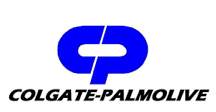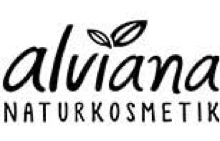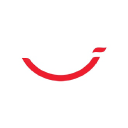Summary
The global toothpaste market has experienced fluctuating trends amid the Covid-19 pandemic with a slight decrease in sales in 2020 due to the change in daily routines as people stayed home. Despite these challenges, the market has shown resilience with a slow but positive growth in value by +0.8% in 2021, as reported by Points de vente. The French market specifically has seen an increased demand for natural and organic toothpaste products, with a 17% value growth in natural and organic offerings by the end of May 2019 compared to the previous year, and a significant 75% increase for the organic segment alone. The French toothpaste market is dominated by global brands with supermarkets and hypermarkets being the main distribution channels, although pharmacies, organic shops, and online sales are gaining ground. Innovations in product offerings, particularly those leveraging organic and natural ingredients, and advancements in packaging with the introduction of recyclable materials, are key drivers in the market's dynamism. Notably, French consumer habits lag in dental hygiene with less than the recommended frequency of toothbrushing, indicating potential for market growth as oral care awareness rises..Toothpaste Market Trends in France: A Shift Towards Conscious Consumption The current landscape of the French toothpaste market mirrors the emergence of health-aware consumers who prioritize not only traditional dental hygiene but also bio-sustainability. Interestingly, despite the French population's moderately consistent oral hygiene practices, there has been a discernible increase in demand for toothpaste varieties that emphasize organic and natural ingredients. This shift is highlighted by a remarkable 17% growth in the natural and organic toothpaste offerings in mass distribution channels. Specifically, the organic segment alone, encompassing revered brands like Léa Nature, soared by an impressive 75% in value compared to the previous year. Despite the organic segment's minimal 2% stake in the entire personal care sector, it signals a promising future with sizable potential for growth. While the French market is predominantly spearheaded by international conglomerates, domestically it's marked by a dominance of imports from powerhouses such as Germany, Poland, and the United Kingdom. French brands maintain a modest presence, with market leaders like Unilever, showcasing their Signal brand as a favorite among more than 15 million consumers. In contrast, the market for manual toothbrushes is slightly on the wane, with the advent of technology-driven products like electric brushes from Oral B gaining traction, as evident from their sales surge of 8.6%. This bifurcation in the manual and electric brush segments indicates a nuanced consumer preference influenced by technology and sustainability. The selection criteria for toothpaste in France extend beyond mere dental care, encompassing aspects such as sensitivity alleviation and gingival protection. "Classical" toothpaste still reigns supreme in usage, although the organic toothpaste user base has grown from approximately 2 to more than 3 million users. Such preferences spell out a gradual yet consistent shift towards a more environmentally cautious market. The French toothpaste industry reflects this trend, with a notable 6.4% share of the European production market, situating France comfortably behind stalwarts like Germany and Italy. The French market's partiality towards eco-friendly products is further underscored by the growing consumer aversion to ingredients like fluoride when in excess, and other chemical compounds that potentially harm the environment. This concern extends to the manufacturing processes that require high energy consumption, hinting at a burgeoning inclination towards sustainable practices. In terms of pricing, the average cost of toothpaste hovers around €2.00 to €7.00, with specialized product ranges from renowned brands fetching higher price tags. The burgeoning popularity of "organic" and natural.### "Titans of the Toothpaste Market: An Overview of Key Industry Players" In the realm of oral hygiene, a few brand behemoths stand tall, showcasing their firm grip on the toothpaste market with their extensive offerings catering to a wide array of consumer preferences. Dominating the French market, these giants shape the trends and lead innovations in the industry. **Unilever** emerges as a leading force with its popular brand Signal, renowned for garnering a large consumer base in France. Astutely tuned to market demands, Unilever has also ventured into the natural segment with its organic products to cater to the growing consumer interest in healthful and environmentally friendly options. **Procter & Gamble (P&G)** is another key player that boasts of the famous Oral-B brand, which not only offers toothpaste but has also made significant strides in the electric toothbrush market. P&G’s commitment to oral health is evident through their expansive product portfolio, meeting a broad spectrum of needs from daily care to advanced oral health solutions. **Sunstar** may not be highlighted as prominently in the French market context, but it remains an influential player on the international stage. Their approach to oral healthcare involves a comprehensive strategy that integrates medical research with advanced technology. Moving beyond the consumer goods sector, companies focused expressly on oral care products leave their mark in the industry. **Pierre Fabre** is one such specialized producer, and while it may not match the magnanimous scale of Unilever or P&G, it maintains a significant presence in the market, resonating particularly with those consumers turning towards pharmacy brands. **Dabur** is another dedicated oral care manufacturer whose natural and herbal offerings underpin their product portfolio, appealing to the growing demographic seeking traditional and plant-based oral care solutions. The toothpaste market's natural and organic wave is further surfed by companies like **Cattier**, **Coslys**, and **Weleda**, which capitalize on the burgeoning demand for eco-friendly and sustainable products. Amid heightened consumer consciousness about product ingredients and environmental impacts, these firms offer a refreshing alternative to the conventional toothpaste options, fortifying their positions as niche but potent players in the industry. Each of these titans and specialized firms plays a critical role in shaping the present and future landscape of the toothpaste market. Through their efforts, they not only address diverse consumer needs but also drive forward the frontiers of product innovation and sustainability within the realm of oral care. Their success lies not only in their ability to sell products but
to understand this market
Detailed content
 Inforamtion
Inforamtion
- Number of pages : 30 pages
- Format : Digital and PDF versions
- Last update : 15/03/2021
 Summary and extracts
Summary and extracts
1 Market overview
1.1 Definition and scope of the study
Toothpaste is an abrasive and antiseptic paste, gel or powder used to clean teeth for health and aesthetic reasons. The first commercially available toothpastes appeared in the 19th century, and it was in 1896 in New York City that Colgate produced the first tube of toothpaste in the form known today.
The toothpaste market is a sub-segment of the oral hygiene market which in turn is a segment of the hygiene and cosmetics market. The global toothpaste market is a relatively mature but growing market where dynamism is driven by innovation of supply.
Globally, toothpaste sales are growing amid increased health concerns and higher spending power which permits more people to access the product. Indeed, a CAGR of 3.1% over the period 2017 to 2024 is expected, with Asia-Pacific being the key driving market.
The French market, similar to that of the global market, is largely dominated by leading brands (such as Colgate) owned by large groups, whose sales are mainly made in supermarkets and hypermarkets.
The French still have some progress to make in the area of dental hygiene habits which proves that the sector is buoyant. Finally, the market is disrupted by the appeal of organic and natural products.
In 2020, due to the pandemic, toothpaste sales have slightly decreased. However, before the crisis, the sales showed a little increase, an upward trend that seems to resume in 2021.
1.2 A growing global market
The global market for oral care products was valued at US$**.* billion in ****, or *% of the overall hygiene and cosmetics market. It is a market in continuous expansion (***) and is expected to reach $US**.* billion in ****, equal to an average annual growth of *.*% over the period **** to ****.
Market size oral products World, ...
1.3 A French market dominated by global brands
The market for personal hygiene products is in decline with a decrease in domestic demand in France for the third consecutive year (***). Nevertheless, oral hygiene products held up well, thanks in particular to the toothpaste segment [***].
The oral care branch accounted for *.*% of total personal care product billings in ****.
Breakdown of ...
1.4 Summary of market determinants
The table below summarises the main determinants of toothpaste market activity; the evolution given for each factor is an assessment of the impact (***) in the coming years on the toothpaste market.
Source: ****
1.5 Covid-19 pandemic slightly affected the market
Covid-** and its numerous daily-life restrictions which maintained most of French people at home, resulted in a decrease in the overall level of oral hygene. Indeed, the fact of not going to work for most people made them "forget" about their oral habits, and the toothpaste category itself having has declined ...
2 Demand Analysis
2.1 The French lag behind in dental hygiene
In spite of the many messages about oral hygiene, the French are below the recommended frequency for brushing teeth.
**% brush once a day, whilst only **% brush three times a day. The **-** year olds are the most assiduous. On average, they consume three tubes of toothpaste per year when five ...
2.2 The French craze for natural and technological products
Toothpastes with an organic label have seen the greatest growth in mass distribution channels in France. At the end of May ****, the natural and organic offerings showed a **% growth in value compared to the previous year, and **% for the Bio segment alone [***].
Brands like Léa Nature are thus a must ...
2.3 Criteria for choosing a tube of toothpaste
"Classical" toothpaste remains the most used by French consumers in **** according to a report by Kantar Media. More than ** million French people used it during the year, a number that is lower than in **** (***).
This decrease is observed for all types of toothpaste, with the exception of organic products. The number ...
2.4 Les marques de dentifrice préférées des Français
Le graphique ci-dessous a été obtenu à partir du sondage mené par OpinionWay au sujet des marques préférées des Français en mars ****. Il s'agit des réponses des sondés à la question "aimez-vous telle marque de dentifrice ?" pour chaque marque, le pourcentage correspond à la part de sondés ...
3 Market structure
3.1 Overview of the French toothpaste industry
The French toothpaste industry represented *.*% of European production in ****. This places France in fourth place behind Germany (***).
The toothpaste market is a mature market in France. Manufacturers, mainly the leaders, are constantly using communication and marketing campaigns to strengthen the attractiveness and image of their brands. Such events often include celebrities ...
3.2 Production for the national and European markets
French production is mainly intended for the domestic market (***).
In ****, French exports of toothpaste accounted for €*** million. The main destinations of toothpaste exports are the Netherlands, Italy and Belgium.
Main destination countries for toothpaste exports France, ****, % Source: ****
French imports totalled €*** million, up by *.*% compared to ****. Moreover, they come mainly from ...
3.3 Production processes and environmental considerations
Composition and production stages
As far as the industrial production of the product is concerned, all toothpastes generally contain the same ingredients:
abrasives detergents binding agents dyestuffs artificial flavours antiseptics preservatives humectants (***) therapeutic agents to combat caries or to whiten teeth, for example. The most common compound is sodium fluoride. Toothpastes ...
3.4 A distribution essentially based on supermarkets
Toothpastes are intended for private individuals for domestic use. These products are mainly sold in France through * major distribution channels:
Large and medium-sized stores (***): they offer the widest range of products in terms of references and price ranges. Pharmacies and parapharmacies Organic shops and grocery stores Online sales (***)
Toothpastes are very ...
4 Analysis of the offer
4.1 Average prices recorded
In ****, the average price of one toothpaste unit was €*.** [***]. With a decline in sales volumes, market growth in **** was driven primarily by an average price increase. This can be explained in particular by the success of innovative, natural and organic products with higher added value.
The price of toothpaste at the ...
4.2 Offer segmentation
As previously stated, the brand plays a key role in the differentiation of toothpastes but product innovation is also a central factor to reap market share, particularly for the leaders who regularly launch new product lines [***]. Although it is a basic hygiene product, the marketing innovations of certain brands have sought ...
4.3 The popularity of the "organic" and natural segment
While the hygiene-beauty sector is declining by more than *% in value and volume, organic cosmetics are growing in double digits. Between **** and ****, the evolution of the turnover of the organic hygiene-beauty was around +**% [***].
While all hygiene-beauty segment suffered in supermarkets in ****, oral hygiene is doing quite well. Its turnover increased by ...
4.4 Innovation as a growth driver
Some players offer original textures with toothpastes in the form of dental tablets to be chewed and then lathered with the toothbrush, or solid toothpastes, and sleek packaging that appeals to and attracts new consumers. The development of premium offers and high-end products thus enables market players to limit market contraction ...
5 Regulation
5.1 Toothpaste composition and toxicity
A study by the magazine ** millions de consommateurs en France, relayed by Medisite in ****, shows that some toothpastes contain endocrine disruptors and surfactants that are hazardous to health including three brands: Colgate Max Fresh, Colgate Total original and Fluoryl.
Consumers are therefore advised not to purchase toothpastes containing nanoparticles, triclosan, sodium ...
5.2 Regulations governing the offering for sale
Toothpastes can fall under several statuses. Some are related to cosmetic products, whether they are sold in pharmacies, parapharmacies, or supermarkets. As such, they do not necessarily have to prove their effectiveness before being placed on the market. However, they must guarantee their safety and comply with a list of authorised ...
6 Positioning of the players
6.1 Segmentation
- Colgate Palmolive
- Cattier
- Dabur Meswak
- Sunstar
- Coslys
- Alviana Naturkosmetic (Bonano Gmbh)
- Baracoda
- Bioseptyl
- Y-Brush
- Unilever
- Signal (Unilever)
- Sensodyne (GlaxoSmithKline Santé)
- Parodontax (GlaxoSmithKline Santé)
- Oral-B (Procter & Gamble)
- Colgate Palmolive Elmex
- Laboratoires KISBY
- Laboratoire ODOST - Buccotherm
- Crest (Procter & Gamble)
 List of charts
List of charts
- Taille de marché des produits dentaires
- Répartition du chiffre d'affaires des produits d'hygiène par catégorie
- Répartition du chiffre d'affaires des produits bucco-dentaires par segment
- Fréquence du lavage de dents au sein de la population française
- Les mauvaises habitudes bucco-dentaires des Français en chiffres
All our studies are available online in PDF format
Take a look at an example of our research on another market!
Latest news
Companies quoted in this study
This study contains a complete overview of the companies in the market, with the latest figures and news for each company. :
 Choosing this study means :
Choosing this study means :
Access to more than 35 hours of work
Our studies are the result of over 35 hours of research and analysis. Using our studies allows you to devote more time and added value to your projects.
Benefit from 6 years' experience and over 1,500 industry reports already produced
Our expertise enables us to produce comprehensive studies in all sectors, including niche and emerging markets.
Our know-how and methodology enable us to produce reports that offer unique value for money.
Access to several thousand articles and paid-for data
Businesscoot has access to all the paid economic press as well as exclusive databases to carry out its market research (over 30,000 articles and private sources).
To enhance our research, our analysts also use web indicators (semrush, trends, etc.) to identify market trends and company strategies. (Consult our paying sources)
Guaranteed support after your purchase
A team dedicated to after-sales service, to guarantee you a high level of satisfaction. +44 238 097 0676
A digital format designed for our users
Not only do you have access to a PDF, but also to a digital version designed for our customers. This version gives you access to sources, data in Excel format and graphics. The content of the study can therefore be easily retrieved and adapted for your specific needs.
 Our offers :
Our offers :
the toothpaste market | France
- What are the figures on the size and growth of the market?
- What is driving the growth of the market and its evolution?
- What is the positioning of companies in the value chain?
- Data from several dozen databases
Pack 5 études (-15%) France
- 5 études au prix de 75,6€HT par étude à choisir parmi nos 800 titres sur le catalogue France pendant 12 mois
- Conservez -15% sur les études supplémentaires achetées
- Choisissez le remboursement des crédits non consommés au terme des 12 mois (durée du pack)
Consultez les conditions du pack et de remboursement des crédits non consommés.





 Seb acquires a stake in Y-Brush - 11/10/2023
Seb acquires a stake in Y-Brush - 11/10/2023
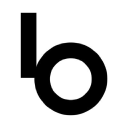 CES 2023: Baracoda launches BHeart, a bracelet to connect all watches - 06/01/2023
CES 2023: Baracoda launches BHeart, a bracelet to connect all watches - 06/01/2023
 Olivier Remoissonnet, entrepreneurship through and through - 29/11/2022
Olivier Remoissonnet, entrepreneurship through and through - 29/11/2022
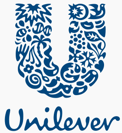 Unilever steps up its ice cream ambitions - 21/11/2022
Unilever steps up its ice cream ambitions - 21/11/2022
